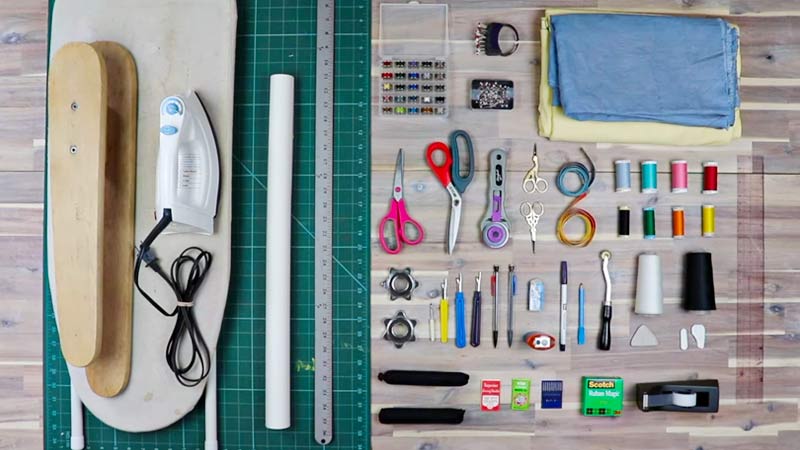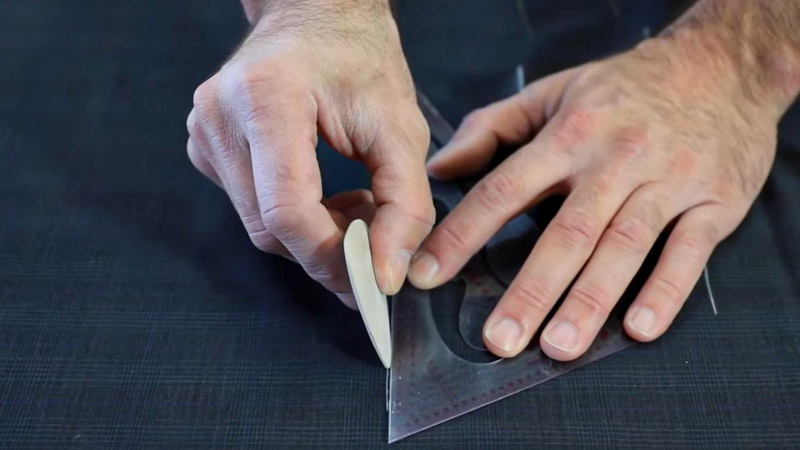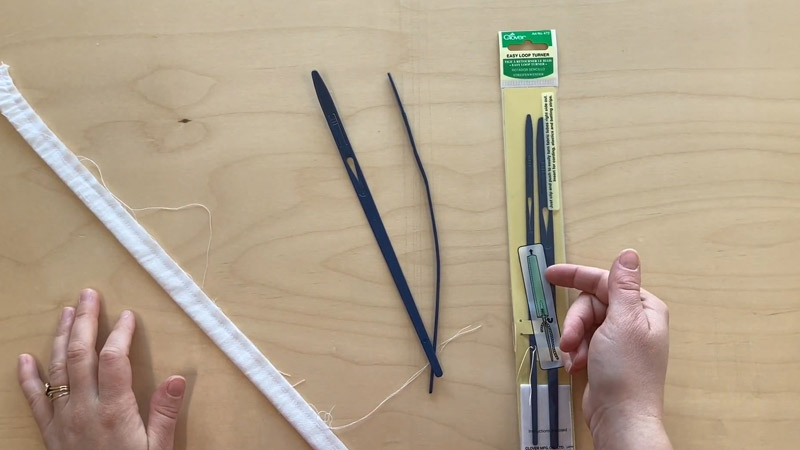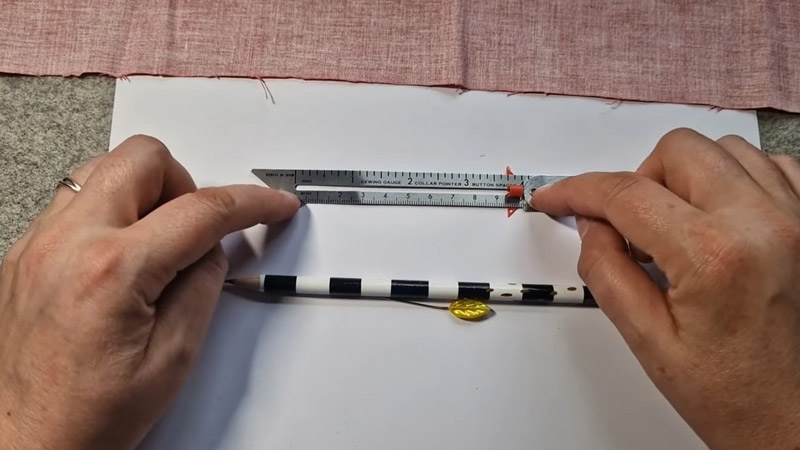Embarking on the sewing journey opens up a world of creativity and precision. Beyond the fundamental tools like needles and threads, a realm of miscellaneous tools plays a pivotal role in enhancing the craft.
Often overlooked by beginners, these tools contribute to the finesse and efficiency of sewing projects.
In this exploration, we will answer the question, ‘What are miscellaneous tools in sewing?’ and delve into the diverse array of miscellaneous tools that form the backbone of sewing.
From measuring implements that ensure accuracy to specialty gadgets designed for unique stitching techniques, each tool brings its own significance to the sewing table.
Understanding the purpose and proper utilization of these miscellaneous tools can elevate the sewing experience, offering new capabilities and confidence to novice and seasoned seamstresses alike. Join us as we unravel the secrets behind these unsung heroes in the world of sewing.

What Is Miscellaneous Tools In Sewing?
Miscellaneous sewing tools refer to various instruments and accessories that may not fall into the category of essential sewing equipment but play crucial roles in enhancing the overall sewing experience. Let’s explore some of the miscellaneous tools and their uses.
Miscellaneous Tools Definition
In sewing, miscellaneous tools refer to various non-specialized implements used for tasks like measuring, cutting, or marking fabric, such as scissors, measuring tapes, pins, and seam rippers.
Seam Ripper
A seam ripper is a small tool with a pointed end and a sharp blade used for removing stitches. It is essential for correcting mistakes, adjusting fit, or repurposing fabrics. A good quality seam ripper helps in precise and easy removal of stitches without damaging the fabric.
Tailor’s Chalk

Tailor’s chalk is a marking tool used to transfer pattern markings onto fabric. It comes in various colors, and its powdery texture allows for easy and temporary marking on different types of fabrics. Tailor’s chalk is particularly useful for marking darts, pleats, and other pattern details.
Point Turner
A point turner is a tool designed to help create sharp and precise points when turning the fabric right side out. It often has a pointed end for pushing out corners and a curved end for smoother turning of curves without causing damage to the fabric.
Hem Gauge
A hem gauge, also known as a seam gauge or hem measurer, is a ruler-like tool with an adjustable slider.
It is used for measuring and marking even hems, seam allowances, and other precise measurements on fabric. Hem gauges are handy for achieving uniformity in hemming and seam finishing.
Loop Turner

A loop turner is a slender tool used for turning fabric tubes right side out, particularly when making spaghetti straps, loops, or button loops. It consists of a small hook that grabs the fabric and pulls it through, making the process of turning narrow tubes much easier.
Bodkin
A bodkin is a tool designed to thread elastic ribbons or drawstrings through casings. It typically has a blunt end for pushing and an eye for holding the item being threaded. Bodkins come in various shapes and sizes to accommodate different materials and applications.
Fabric Clips

Fabric clips, or wonder clips, are alternatives to traditional pins. They are particularly useful when working with thick fabrics or materials that pins might damage. Fabric clips securely hold layers of fabric together without leaving holes, and they are easy to remove as you sew.
Fray Check
Fray Check is a liquid seam sealant used to prevent fabric edges from fraying. It’s applied along the fabric edges and dries clear. Fray Check is especially beneficial for fabrics that tend to unravel or for securing thread ends to prevent them from coming undone.
Pattern Weights
Pattern weights are heavy objects used to hold down pattern pieces on fabric instead of using pins. They are particularly handy when working with delicate or easily damaged fabrics.
Pattern weights help keep pattern pieces in place, ensuring accurate cutting without causing any damage to the material.
Quilting Rulers
Quilting rulers are specialized rulers designed for measuring and cutting fabric in quilting projects. They often feature clear markings, angles, and grids for precise cutting and piecing. Quilting rulers come in various shapes and sizes to accommodate different quilting patterns.
Thread Snips

Thread snips, also known as thread cutters or snippers, are small, sharp scissors designed for quickly cutting threads while sewing.
They are lightweight and easily accessible, making them convenient for trimming excess threads without disrupting your workflow.
Bobbin Holders
Bobbin holders are organizers designed to store and manage bobbins. They help keep bobbins organized and prevent tangling. Some holders also have space to store matching threads, providing a convenient solution for tidying your sewing area.
Pressing Ham
A pressing ham is a firm, rounded cushion used for pressing and shaping curved seams, such as darts and princess seams. Its shape mimics the body’s contours, allowing for precise pressing and achieving a professional finish on garments.
Thimble
A thimble is a protective covering worn on the finger to push needles through the fabric when hand-sewing. Thimbles come in various materials, including metal, plastic, and leather.
They provide added control and protection for your fingers, especially when working with heavy fabrics or multiple layers.
Sewing Gauge

A sewing gauge, also known as a hem gauge or seam gauge, is a small ruler with a sliding marker. It is used for accurately measuring and marking hems, seam allowances, and other small measurements.
Sewing gauges are compact and easy to use, making them a valuable tool for precision in sewing projects.
Miscellaneous Tools in Baking Meaning
In the realm of baking, a plethora of miscellaneous tools contribute to the precision and artistry of creating delectable treats.
These tools extend beyond the fundamental mixing bowls and measuring cups, encompassing a diverse array of utensils that cater to specific tasks, ensuring that bakers can achieve perfection in their creations.
Let’s delve into what miscellaneous tools are and explore their significance.
Offset Spatula
An offset spatula, with its thin, flat, and angled blade, is a versatile tool essential for frosting cakes and spreading batter. Its ergonomic design allows for smooth and even application, ensuring a polished finish on cakes and pastries.
Bench Scraper
A bench scraper, also known as a dough scraper, is invaluable for manipulating dough. Whether dividing dough portions or cleaning work surfaces, this tool’s sharp edge simplifies tasks, maintaining precision in the baking process.
Pastry Blender
A pastry blender comes to the rescue for achieving the perfect crumbly texture in pie crusts or biscuits. This hand-held tool effortlessly blends butter into flour, creating a uniform mixture and enhancing the overall texture of baked goods.
Zester/Grater
Citrus zest or grated chocolate can elevate the flavor profile of desserts. A zester or grater facilitates the extraction of fine, flavorful particles, adding a burst of aroma and taste to various recipes.
Pastry Brush
Precision in applying egg wash or brushing on melted butter is crucial for achieving a golden, glossy finish on baked goods. The pastry brush, with its fine bristles, allows bakers to coat surfaces, enhancing both appearance and flavor delicately.
Doughnut Cutter
A doughnut cutter becomes an essential tool for those indulgent moments when homemade doughnuts are on the agenda. Its circular shape with an integrated hole ensures uniformity in size and shape for a delightful batch of doughnuts.
Cooling Racks
After baking, proper cooling is imperative to prevent sogginess. Cooling racks facilitate air circulation around baked goods, promoting even cooling and preventing condensation that could compromise texture.
Piping Bags and Tips
Decorative elements on cakes and cupcakes are brought to life with piping bags and tips. These tools allow bakers to express their creativity, adding intricate designs and patterns that turn baked goods into edible works of art.
Pastry Wheel
Creating lattice tops for pies or cutting decorative edges for pastries is made easier with a pastry wheel. With its sharp rotating blade, this tool enables precise cutting and adds a professional touch to baked creations.
Oven Thermometer
Maintaining an accurate oven temperature is paramount for successful baking. An oven thermometer ensures that the temperature inside the oven matches the set dial, preventing under or overcooking of delicate pastries.
Flour Sifter
Achieving a light and airy consistency in baked goods requires properly sifted flour. A flour sifter removes lumps and aerates the flour, contributing to the overall texture and quality of the final product.
Rolling Pin Rings
Consistency in dough thickness is crucial for even baking. Rolling pin rings, placed on each end of a rolling pin, control the thickness of rolled dough, preventing unevenness and ensuring uniform baking.
FAQs
What is miscellaneous tools mean in sewing?
Miscellaneous tools in sewing refer to a diverse set of implements beyond the basic essentials. These include items like scissors, measuring tapes, pins, and seam rippers, serving various purposes to facilitate the sewing process.
Why are miscellaneous tools important in sewing?
Miscellaneous tools enhance efficiency and precision in sewing tasks. They cater to specific needs, such as measuring fabric accurately, cutting with precision, securing the fabric in place, and fixing mistakes, ensuring a smoother and more polished sewing experience.
Can you provide examples of miscellaneous tools in sewing?
Miscellaneous sewing tools include pin cushions, thimbles, fabric markers, tailor chalk, and needle threaders. Each tool serves a unique function, contributing to the overall success of sewing projects.
How do miscellaneous tools differ from essential sewing tools?
While essential sewing tools like needles and thread are fundamental, miscellaneous tools serve more specialized functions. They address specific challenges in sewing, offering solutions for tasks such as marking fabric.
Are miscellaneous tools necessary for beginners in sewing?
Yes, miscellaneous tools are beneficial for beginners in sewing. While mastering basic tools is crucial, incorporating miscellaneous tools gradually can enhance skills and broaden capabilities.
Conclusion
The world of sewing extends far beyond the basic needle and thread, and the significance of miscellaneous tools cannot be overstated.
From seam gauges to tailor chalk, these often-overlooked instruments are the unsung heroes contributing to the precision and artistry of sewing projects.
As you navigate the intricate landscape of stitching and crafting, embracing the versatility of these tools can unlock new dimensions in your creations.
Whether you’re a seasoned seamstress or just starting your sewing journey, recognizing and utilizing miscellaneous tools empowers you to refine your skills and bring your creative visions to life more easily.
So, next time you sit down at your sewing machine, take a moment to appreciate these tools’ role in enhancing the quality and finesse of your work.
Embrace the diversity of sewing tools, and let them be your trusted companions on the path to crafting beautiful garments.
Leave a Reply